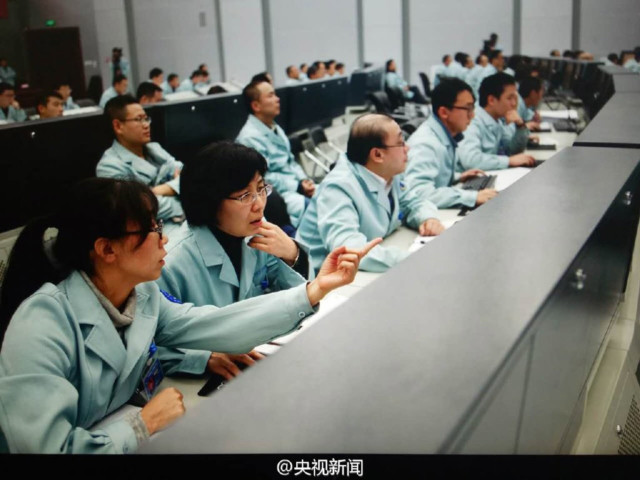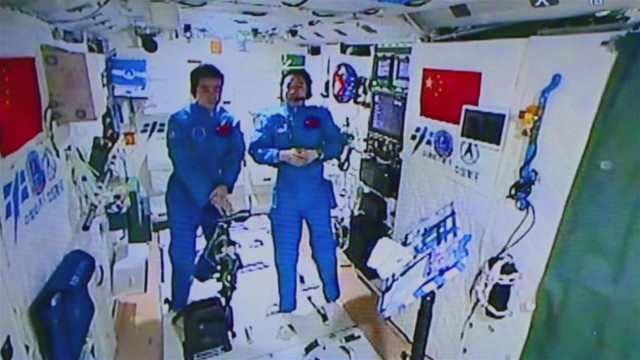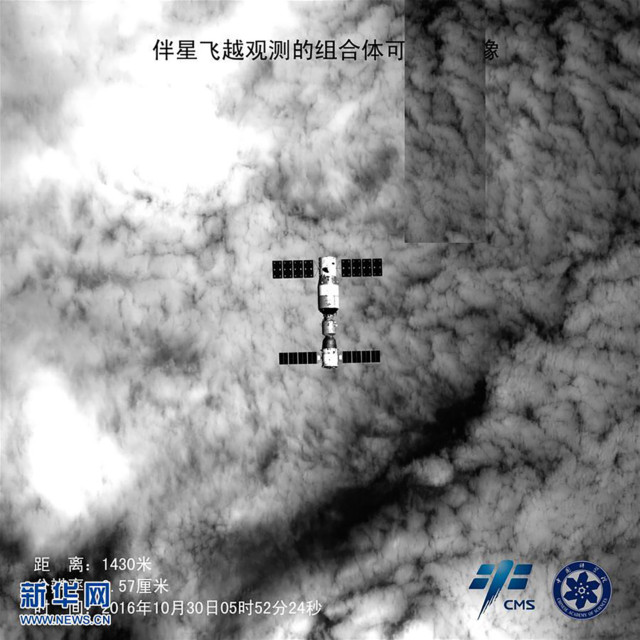The spacecraft Shenzhou-11, which is carrying astronauts Jing Haipeng and Chen Dong, separated from the orbiting Tiangong-2 space lab at 12:41 p.m. Thursday Beijing Time.
The separation marks the beginning of the journey home for the two men, who have lived and worked in Tiangong-2 for 30 days, the longest stay in space by Chinese astronauts.
Prior to the detachment, the two astronauts, Jing Haipeng and Chen Dong, thoroughly checked the condition of the Shenzhou-11 re-entry capsule, which will return them to Earth. They then transferred experimental devices and items from Tiangong-2 to the re-entry capsule before departure.

Ground staff looking forward to safe landing of Shenzhou-11 manned spacecraft after two months of exhaustive preparation.
The astronauts also extended their thanks and respect to their ground team and everyone who has supported China’s space program.
After the separation, Shenzhou-11 will remain near the space lab before they are given leave by the ground team to embark on their return journey.
Learn more about Shenzhou-11 imaging ‘selfie-stick’
Group photo of China’s Tiangong-2 and Shenzhou-11 together with the Earth taken by an accompanying satellite released #SpaceChina pic.twitter.com/hqwUAg1L9x
— CGTN (@CGTNOfficial) November 1, 2016
About a day later, the reentry module will descend from orbit about 393 kilometers above Earth, a true test for Shenzhou-11’s reentry system.
The Shenzhou-11 mission has been one of major pride for the Chinese space program. On November 9, President Xi Jinping spoke to Jing Haipeng and Chen Dong aboard the space lab.
President #XiJinping makes phone call from Beijing to two astronauts, Jing Haipeng and Chen Dong, aboard #Tiangong2 #SpaceChina pic.twitter.com/OiguVWvyE6
— CGTN (@CGTNOfficial) November 9, 2016
The astronauts have carried out unique scientific experiments, including everything from fuel and data transfer – to the effects of zero gravity on silk worm coccoons and growing lettuce.
Chinese astronauts onboard #Tiangong2 close to harvesting crop of space-grown lettuce, as part of plant experiment #SpaceChina pic.twitter.com/JgtZl7OgWg
— CGTN (@CGTNOfficial) November 13, 2016
Tiangong-2 will remain in its orbit and remote experiments will continue until it docks with Tianzhou-1, China’s first cargo spacecraft, which is set to be launched in April 2017.
WATCH: Experiments aboard the Tiangong-2

The primary landing site for Shenzhou-11 in Inner Mongolia has been prepared to welcome the two astronauts back home, an official announced Thursday.
According to Li Junzhi, an official from the site, drones will be used for the first time in spacecraft recovery and are expected to expand the search area and improve efficiency.
Supplies such as clothes and blankets have been prepared to keep the astronauts warm, considering their long stay in space and that it will be China’s first manned spacecraft landing in winter, said Li.
 CGTN America
CGTN America
 Photo provided by Astronaut Center of China shows Chinese astronauts Jing Haipeng (R) and Chen Dong accept their first earth-space interview in Tiangong-2, Nov. 15, 2016.
Photo provided by Astronaut Center of China shows Chinese astronauts Jing Haipeng (R) and Chen Dong accept their first earth-space interview in Tiangong-2, Nov. 15, 2016.


